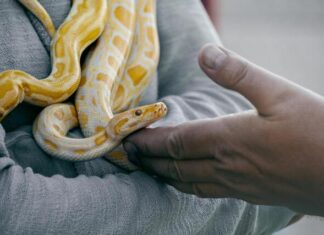I have heard from many gardeners stories of plants that have either survived or died from vandalism in a front garden. One plant that has won praise is the Hibiscus Diverticata.
This Native Hibiscus would have to be one of the toughest plants you could ever ask for. Whether it is for a high vandal area or a very dry position, even in a western position in your garden where you can never get a plant to grow this Hibiscus will grow. You can see some great examples of the Hibiscus Diverticata in the Tondoon Botanic Gardens.
Hibiscus diverticata grows to 50 cm high and is approximately 1m wide with up to 180 mm greenish-yellow flowers with cardinal red eyes. It is best pruned in Spring for Summer-Autumn flowering.
IN THE VEGETABLE GARDEN
Now that Summer is over it is time to consider reviving the backyard vegie patch. Establishing a veggie garden can be quiet rewarding and relaxing at the same time.
When starting a vegie patch the way you prepare the soil you have will help. The inclusion of organic matter in your vegetable garden soil will help retain soil moisture, allowing water to penetrate and the roots to go deep into the soil. In clay soil, the clay often packs down which then prevents moisture from penetrating deeply into the soil profile. The addition of organic matter will physically separates the clay particles. For those gardeners how have a vegie patch, March is very important for preparing the vegie patch for the coming cooler months.
Even Autumn gives the vegie gardener so many vegetable varieties to grow. Beans, Beetroot, Broccoli, Cabbage, Cauliflower, Capsicum, Carrots, Celery, Cress, Cucumber, Leek, Lettuce, Marrow, Mustard, Potatoes, Radish, Silverbeet, Tomato and zucchini can all go in now. Brussels sprouts can be tried during March and April but there are a lot of gardeners who have had some loses at this time of the year.
The best Lettuce to grow at the moment is the loose-leaf types as the hearting varieties will grow when the weather starts to cool.
For me every vegie patch should have some leguminous plants like peas and beans for a number of reasons. First, these types of vegies are a magnet for many insects. I always plant more beans then I need so I can sacrifice the rest to the chewing insects. Secondly legumes can have an important roll to the whole vegie patch as they have tiny root nodules filled with bacteria known as Rhizobium. Rhizobium is able take nitrogen from the air and convert it to an organic form which benefits both the plant and the garden soil. Rhizobium does require a soil with a pH close to or just over 6.5 and with an adequate supply of the nutrients, phosphorus and even some molybdenum. Simply raising the pH level will have the effect of releasing sufficient molybdenum that is already present in the soil of vegie patch. An application of Dolomite at the rate of 200 grams per square metre four to six weeks before planting will achieve this result. I would apply some Dynamic Lifter with a little amount of sulphate of potash as well at the time of planting.
One important hint when growing Beans and Peas do not use companion plantings of Garlic and Onions nearby them are not good neighbours.
My favourite vegetables are Broccoli, Cabbage and Cauliflower, these vegies are known as Brassicas and can also be grown from now on. If you are growing Brassicas for the first time I would treat the soil of the vegie patch with some dolomite four to six weeks before planting. I have had the best results with using Blood and Bone with a little dash sulphate of potash when planting. Brassicas seem to be best planted from seedling punnets rather than seeding directly into the vegie patch. One other little hint is that Brassicas will not grow well near Tomatoes.
Another important hint when planting seedling from punnets is to drench with Fish Emulsion immediately after being planted out. This will help the seedlings recover from the shock of transplanting.












